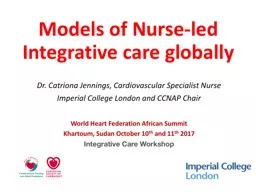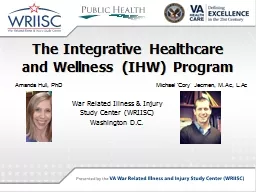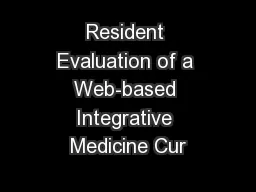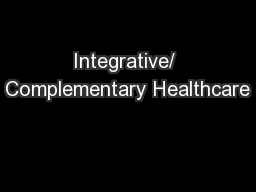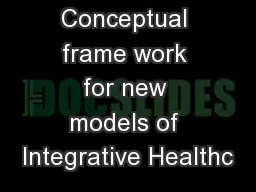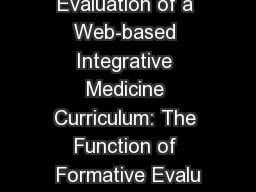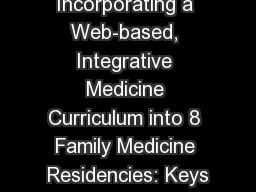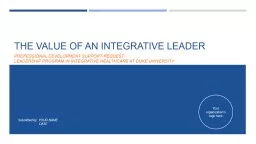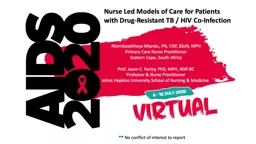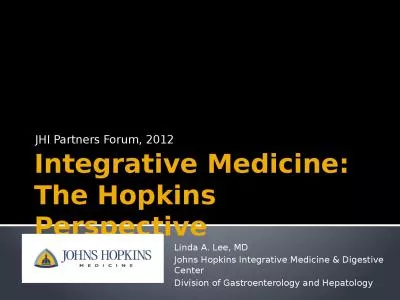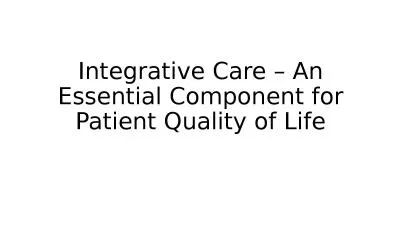PPT-Models of Nurse-led Integrative care globally
Author : lois-ondreau | Published Date : 2018-12-10
Dr Catriona Jennings Cardiovascular Specialist Nurse Imperial College London and CCNAP Chair World Heart Federation African Summit Khartoum Sudan October 10 th
Presentation Embed Code
Download Presentation
Download Presentation The PPT/PDF document "Models of Nurse-led Integrative care glo..." is the property of its rightful owner. Permission is granted to download and print the materials on this website for personal, non-commercial use only, and to display it on your personal computer provided you do not modify the materials and that you retain all copyright notices contained in the materials. By downloading content from our website, you accept the terms of this agreement.
Models of Nurse-led Integrative care globally: Transcript
Download Rules Of Document
"Models of Nurse-led Integrative care globally"The content belongs to its owner. You may download and print it for personal use, without modification, and keep all copyright notices. By downloading, you agree to these terms.
Related Documents

